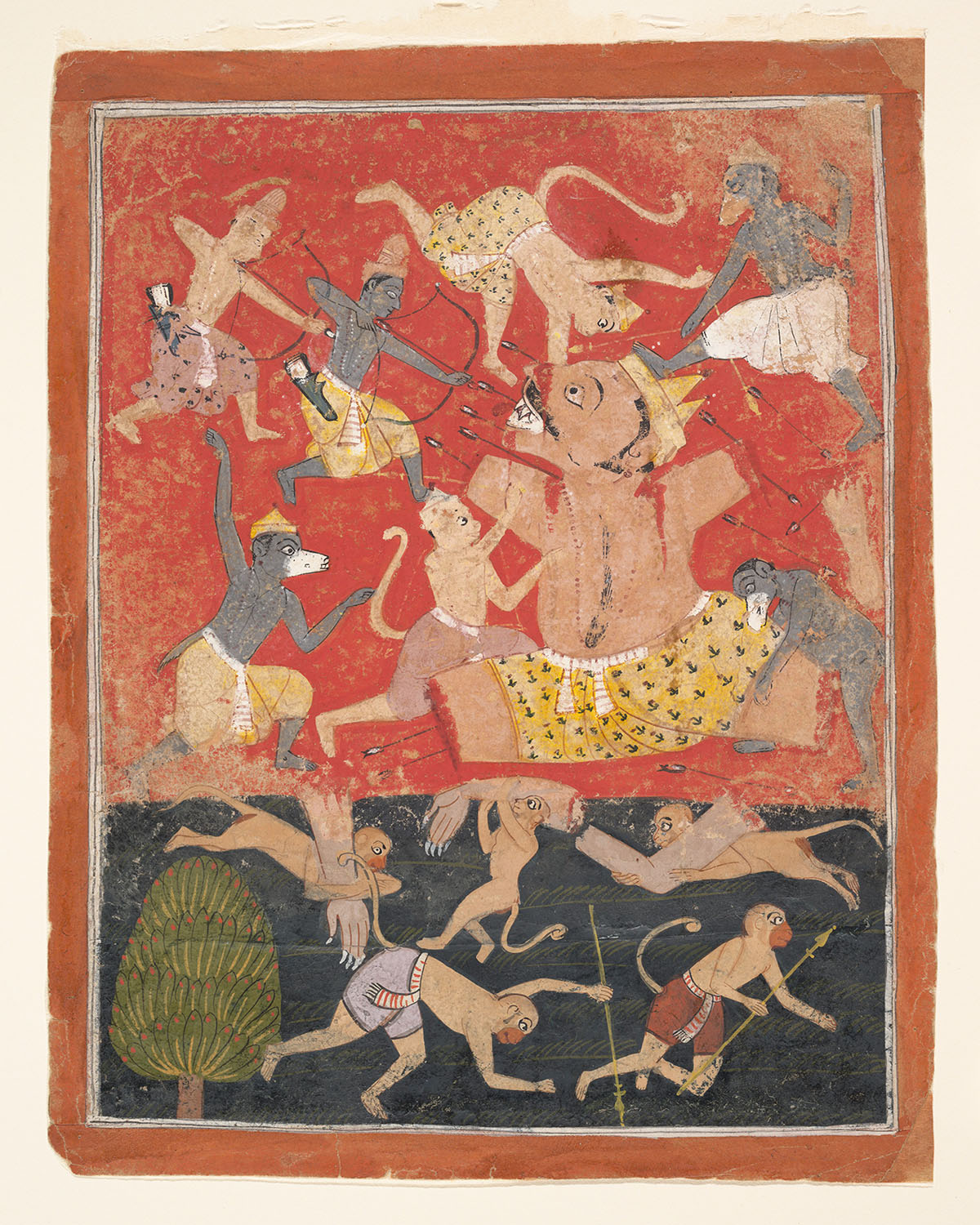ARTICLE
Malwa School of Painting
A sub-school within the larger framework of Central Indian painting, the Malwa school evolved to reflect a diversity of political, cultural and artistic forces from the thirteenth to the eighteenth centuries. The art of this region was also strongly influenced by the Rajput school of painting, due to its geographical proximity to Rajasthan.
Between the thirteenth to the mid-sixteenth centuries, Malwa was ruled first by the Delhi Sultanate and later by the Malwa Sultanate. During this time, its capital, Mandu, became an important centre of art and culture. This included manuscript painting, which is likely to have followed the Western Indian Painting and the Kulahadar styles. Among the notable works from this period are a fifteenth-century manuscript of the Kalpa Sutra, and the Nimatnama (c. 1500), an illustrated book of recipes and delicacies. The latter in particular embodies the fusion of Persian influences with the Western Indian style that became predominant from the sixteenth century onwards, as seen in the Chaurapanchasika manuscript, the Laur Chanda manuscript and other works.
After Mandu was conquered by the Mughals in the mid-sixteenth century, manuscript painting suffered a decline. The region was politically divided into Rajput principalities and the local painting style became allied to the broader school of Rajput painting, which was characterised by its flat composition, bold hues, and themes based on religious texts, folklore and romantic poetry. In Malwa, these characteristics were combined with the use of flat patches of colour to present figures in relief and the established style of depicting architectural elements. Some of the notable works from this period include a series of Rasikapriya illustrations dated to 1634, a Ramayana folio dated c. 1640 an 1652 and a series of ragamala paintings dated to the later decades of the seventeenth century, and a Ramayana folio, circa 1640.
Scholars believe this style stagnated in the eighteenth century, when the Marathas – the predominant political force of the time – established centres of power in Gwalior and Indore. Manuscript painting lost its patronage from the royal courts during this period, which ultimately resulted in the decline of the Malwa school.
Bibliography
Our website is currently undergoing maintenance and re-design, due to which we have had to take down some of our bibliographies. While these will be re-published shortly, you can request references for specific articles by writing to hellomapacademy@map-india.org.









